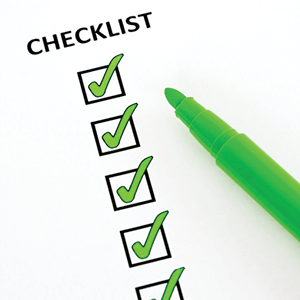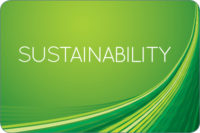
|
· ensure customer requirements and consumer demands are met;
· differentiate themselves from competitors and demonstrate a commitment to sustainability;
· improve asset utilization and the profitability of logistics management; and
· mitigate social, environmental, and economic risks within the supply chain.
While evaluating the sustainable practices of suppliers is no easy task, taking time to review the business practices of supply chain partners can help ensure your sustainability efforts don’t fall short or become subject to stakeholder criticism. Here are a few tips for evaluating sustainable practices of your supply chain.
Understand the business case
As with all other aspects of business, you should fully understand why your company engages in, and what it expects to gain from, certain activities. Establishing the business case for evaluating the sustainable practices of supply partners is no exception. It’s important to know up front why you are evaluating the sustainable practices of your supply partners and what you hope to achieve.
· Do you want to establish supply-chain expectations or improve specific supply-chain efficiencies?
· Do you want to eliminate or mitigate supply-chain risks that have the potential to negatively impact society, harm the environment or damage your company’s bottom line?
· Is there an opportunity for your company to influence the sustainability performance of your supply chain?
· Are there supply-chain sustainability goals you are working toward?
· Is there an opportunity for you to collaborate with a segment of your supply chain on sustainability-related issues?
Whatever your reason, the most successful evaluation programs of supply-chain sustainable practices are those that address multiple business concerns and drivers.
Categorize your supply partners
No two supply partners are alike; thus their commitment and approach to sustainability will be different. For this reason, you may find it beneficial to categorize your suppliers based on your sustainable supply-chain business case. Commonly used categorization criteria includes, but is not limited to: the size and geographic location of the supplier; the relative importance of the supplier to your business; shared sustainability values, beliefs and goals; a supplier’s existing sustainability programs and initiatives; and a supplier’s interest in a strategic sustainability partnership. The categorization process will help you identify those supply partners you want to evaluate more broadly and those for which you want a more in-depth evaluation.
For example, you may evaluate certain supply partners to simply ensure they are implementing responsible and sustainable business practices. If, however, you want to establish collaborative partnerships to address specific sustainability-related issues, this may require a more detailed evaluation.
Be straightforward when assessing performance
You don’t need a third-party consultant or an extensive survey to assess the sustainability performance of your supply chain. Instead, I recommend companies work directly with their suppliers to develop an assessment approach that works best for both parties. For example, why not have an old-fashioned face-to-face discussion?
The next time you’re meeting with a supplier or visiting a supplier site, simply ask questions about their sustainability program. Ask about their definition of sustainability and if their company policy demonstrates a commitment to sustainability. Inquire about the concerns and focus areas of their stakeholders. Give supply partners an opportunity to talk about any short or long-term sustainability goals they have set and the progress they are making toward meeting those goals. How the supplier responds to your questions will quickly tell you how they view and approach sustainability.
If you and your supplier agree a survey is the best approach to evaluating sustainability performance, keep the survey straightforward, relevant and, most importantly, manageable. It’s both time-consuming and frustrating to respond to sustainability surveys containing 100 or more questions that, for the most part, are “not applicable.” This is especially true when a supplier makes a sustainability report available.
Tailor your survey so that it asks about the issues most important to your company and stakeholders. For those in the meat-processing industry, this could include hiring and labor practices, food safety and quality, workplace safety, animal welfare, environmental protection, and community involvement. As a bonus, you don’t have to re-invent the wheel with your survey. Several well-done, customizable surveys and questionnaires are available online.
As the saying goes, “You’re only as good as the company you keep.” As a critical link in a company’s inputs and outputs, supply partners can either be an advantage or a disadvantage to a company’s sustainability efforts.
Once you start evaluating your supply partners and their commitment to sustainability, don’t stop. Ensure sustainability is part of your regular discussions with suppliers. Develop a relationship with your supply partners based on open communication, transparency, continual improvement, and innovative thinking.
Actively seek out forums to share sustainability advice, tips, ideas, and lessons learned with your suppliers as well as learn from their sustainability journey. Lead by example and work with your supply partners to seize opportunities that generate joint success.





Report Abusive Comment